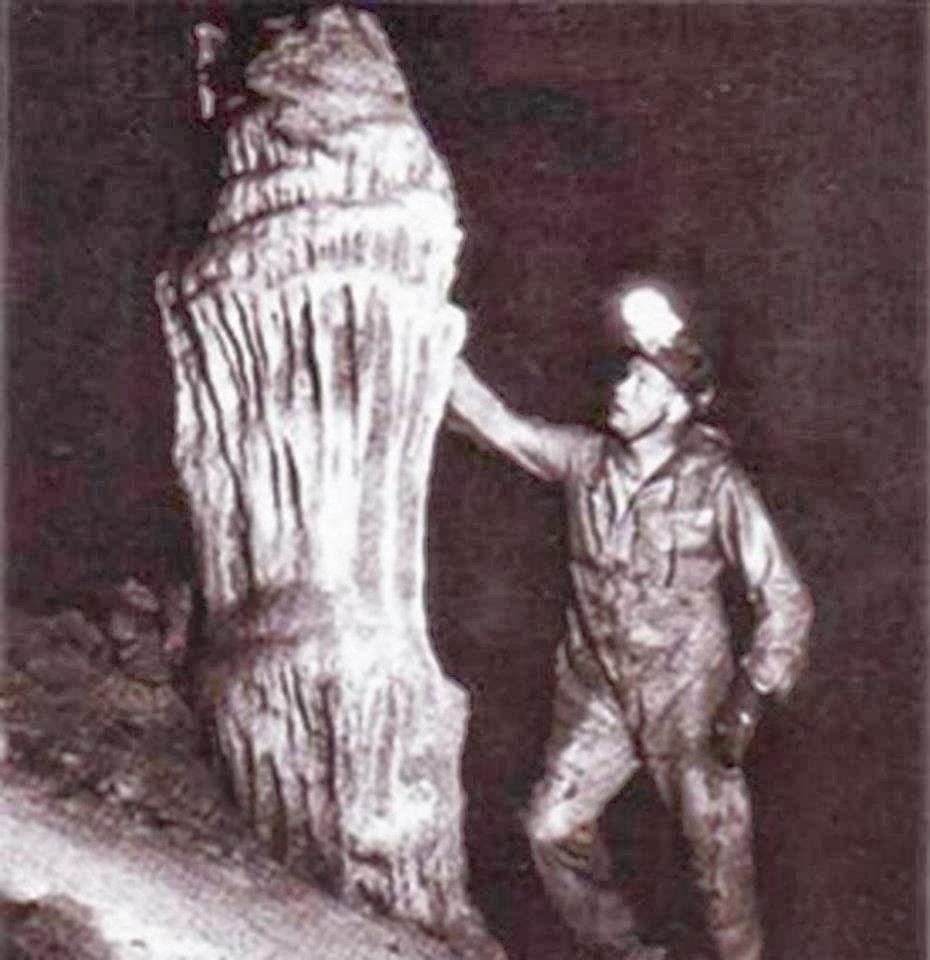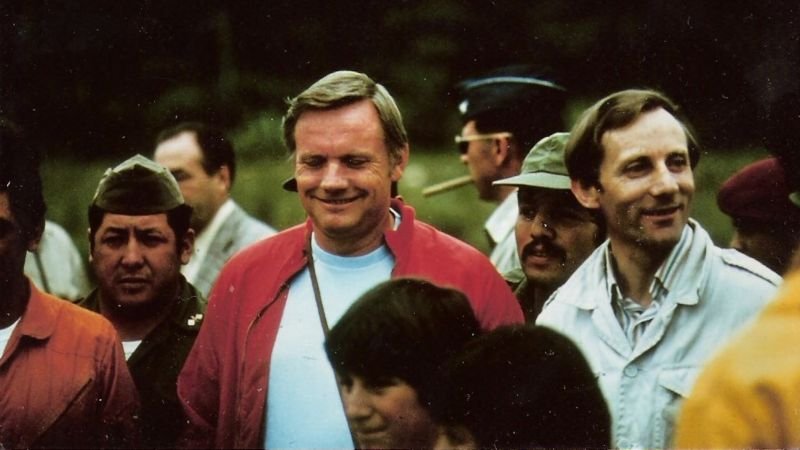Lost Treasures in South America: Cueva de Los Tayos, Padre Crespi and Lost City of Tairona
Disclaimer
The intention of this content is to expand awareness about certain places, myths and stories told at some point by humanity. Much of the information may not be scientifically supported or may contradict current theories. Knowledge, throughout history, is constantly updated, constructed or replaced when there is greater understanding. Therefore, we want to build a serious approach, within free thought, and in its use in a beneficial way for collective evolution. If you like this content, please consider to follow us on Instagram and Youtube for more.
Amid the lush landscape of South America, where dense jungle intertwines with majestic mountains, lies a stage of lost stories and enigmas that defy human understanding. Every explorer's dream is simply to discover hidden cities and treasures in these unexplored jungles. But are these places really that much? Or were they just fiction stories?
Cueva de los Tayos: A Portal to Unknown?
Once again, my research led me to Equador, a country of singular beauty and mysteries buried in the depths of its caverns. In a remote region of the Ecuadorian Amazon, there are two most intriguing enigmas - Cueva de los Tayos. This cavern, with its calcareous walls that echo the sighs of time, is a true portal to the unhealed.
Upon entering Cueva de los Tayos, you are greeted by an underground world of stalactites that hang from the ceiling like lustres sculpted by nature itself. However, it is not just the natural beauty that fascinates; But there is also the presence of unexplained artifacts, such as stone sheets, precious metals and ceramic pots, which shed light on a possible presence of a lost civilization.
Foto por Miguel Garzón
An Astronaut... Under the Earth!
The history of Cueva de los Tayos, although older, gained notoriety in the 1970s, when Neil Armstrong led a team of explorers on the expedition to Cueva de los Tayos. The team found a series of underground chambers that housed not only spectacular rock formations but also intriguing artifacts that defied some conventional explanations.
Among the notable discoveries were rock engravings, the complexity of which left researchers perplexed. Furthermore, they found advanced metallurgy in a remote region, raising questions about how such skills could have developed far from known urban centers.
Conspiracy Theories or Facts?
The metal library was one of the main speculations related to the Cave. According to the theory of Erich von Däniken, a Swiss writer known for his speculations about the possibility of contact between ancient human beings and extraterrestrial beings, the library is made up of metal plates with inscriptions that contain advanced knowledge. The existence of this metal library was first reported in 1973, in the book "The Gold of the Gods", by von Däniken.
The existence of this library has been the subject of controversy and expeditions have been organized to try to find it. However, to this day, there is no concrete evidence to prove the existence of the metal library. Many people believe that von Däniken's theory is unfounded and that the library is an invention. Others argue that the library may exist but has not yet been found. Some also claim that it was found, but completely removed and stored in a secret location.
The presence of an intriguing metal plate, with features resembling star maps, has further fueled speculation. Could it be a missing link between the ancient inhabitants of Cueva de los Tayos and the stars above? The questions continue to this day to echo in the depths of the cave, whispering ancient secrets.
Foto por Miguel Garzón
Recent searches in Cueva de Los Tayos
Recently, Tayos Cave was featured in the episode of "Expedition Unknown", titled "Hunt for the Metal Library". The program followed the expedition led by explorer Josh Gates and his team, who headed to Ecuador to explore the depths of the cave.
For the expedition, Gates' team enlisted the help of a local guide from the Shuar tribe and Eileen Hall, daughter of Stan Hall, Neil Armstrong's companion on the 1976 expedition that investigated the cave following Von Däniken's allegations. The team had to overcome several obstacles, such as crossing mighty rivers, facing adverse weather conditions and brave the dense equatorial forest to reach the cave entrance.
Once inside the cave, the team faced challenges such as mazes and total darkness. They used advanced technology, such as drones and laser scanning equipment, to help them map and explore the cave.
Although the team found some interesting evidence of human activity in the cave, such as ancient stone tools and ceramics, they did not find any metal libraries, or other evidence of an advanced civilization. However, the expedition was considered a success, as it managed to explore areas of the cave that had never been explored before and helped shed light on the mysteries and legends surrounding the Cave. [1]
Foto por Miguel Garzón
Father Crespi: A Guardian of Mysterious Relics in South America
In the context of fascinating discoveries in South America, the notable figure of the Italian Carmelite priest, Carlo Crespi Croci, stands out. In the mid-20th century, Father Crespi dedicated much of his life to his religious mission in Ecuador, but he also became known for his impressive collection of archaeological artifacts and mysterious objects.
Father Crespi claimed to have acquired many of these pieces from the same tribe mentioned in the explorations of the Cuevas de los Tayos, the Shuar, in exchange for gifts or humanitarian aid. Among the artifacts, some were inlaid with enigmatic symbols, leading to speculation about connections to ancient civilizations or even cultures beyond our knowledge.
The Controversial Legacy: Relics or Frauds?
Father Crespi's legacy is sometimes shrouded in controversy. His collection was made up of objects ranging from metallic discs and carved stones to artifacts supposedly linked to lost civilizations. While some considered their discoveries as evidence of an unknown history, others claimed that many of these artifacts were modern fabrications or even simple common objects. Below we will leave a very interesting article with a collection of some of these objects:
What is most surprising in my opinion about Father Crespi's story is when it is discovered that much of his original collection simply disappeared after his death. Several intriguing objects have disappeared without a trace, raising questions about the fate of these relics. Speculation about sale to foreign entities, deliberate concealment by the church, or even a conspiracy to protect ancient secrets surround this chapter of the story, turning Father Crespi's life into an intriguing mystery.
The Lost City of Tairona: An Ancient Refuge
Along Colombia's Caribbean Coast, hidden in the dense forests of the Sierra Nevada, lies the mysterious lost city of Tairona. This ancient pre-Columbian civilization flourished between the 6th and 15th centuries, building a sophisticated city with advanced architectural structures, irrigation systems, and agricultural terraces.
The city, known as Ciudad Perdida, was only discovered in 1972 by a group of looters. The site, however, remains an enigma to many, with vast areas still unexplored and structures that defy conventional understanding of archaeology. How the Tairona managed to create an advanced society in such a remote region remains one of South America's great archaeological mysteries.
The lost city is known for its intricate terraces and paths that stretch across the slopes of the Sierra Nevada. Archaeologists believe these structures served both agricultural and symbolic purposes, reflecting the complexity of Tairona society. Every step in this ancient city seems to tell a story lost in time, inviting the curious to uncover the mysteries buried in the ruins.
Conclusions
When I was in Peru, I was amazed by the number of places and cities yet to be discovered. Every place and trail I stepped on, many mysteries lay on the slopes, mountains and valleys. South America, especially near the Amazon, is an incredible place with many mysteries to be discovered.
An often-repeated story is that many of these sites are first explored by treasure-hungry people and looters, even if they are historical looters. In some cases, even local people may preserve these treasures for obvious reasons. Therefore, we cannot determine for sure what was in each of these caves, tombs or cities. Visiting them today can be like looking at the empty walls of a great palace.
However, history, whether official or hidden, and oral myths provide fragments of useful knowledge to discover clues to these incalculable riches that can better explain our origins. Where are they now? Did they really exist? So we continue to explore, because the truth is out there! Until the next!
[1] Wikipedia - https://pt.wikipedia.org/wiki/Cueva_de_los_Tayos





